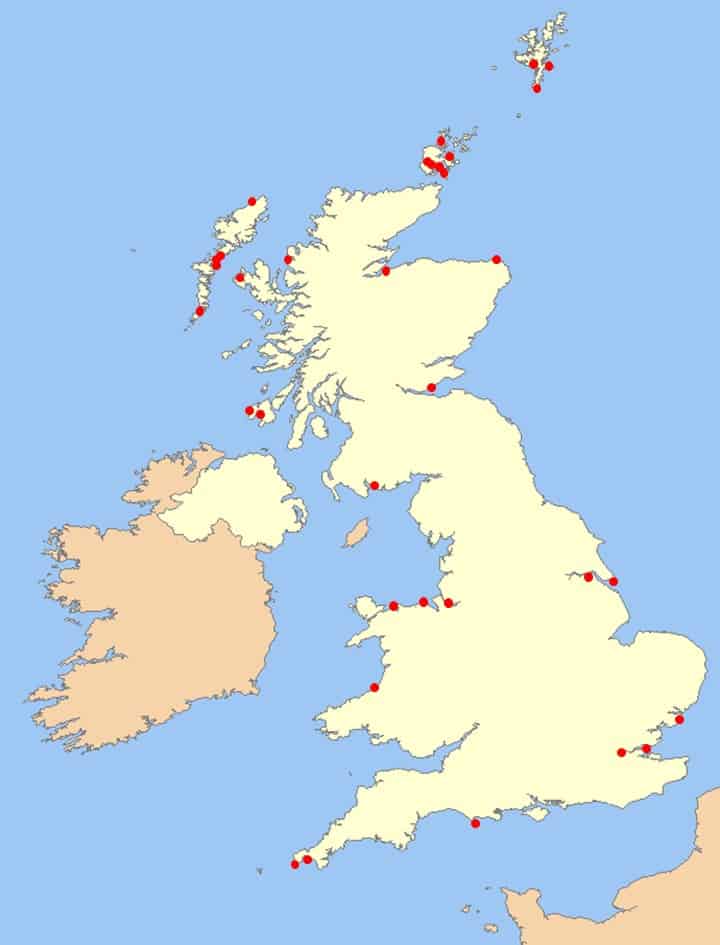
A pelagic species of baleen whale measuring up to 8.5 metres in length, dark grey dorsally, pale grey/white ventrally, with a white band on the dorsal surface of the pectoral flippers. The dorsal fin is set well back, two thirds of the way along the back.
Minke whales have a gestation period of 10 months. Calves are born in winter,measuring 2.6 metres and are dependent for approximately 4 months. The species is found alone or in small groups, and they feed on krill and a variety of shoaling fish.
This species is found in the north Atlantic, northern North Sea and western approaches to the English Channel and is seen in British coastal waters mainly in the summer.

Minke whales are a relatively small baleen whale which hunts fish shoals in coastal environments. As such they can be caught out by tidal movements and geographic features and become stranded.
Young animals especially may be hunted by larger predators such as killer whales and chased onto shorelines.
If in good condition, minke whales have been successfully refloated by BDMLR teams on a number of occasions in the past, including in Cornwall in 1999 when our inflatable whale rescue pontoon system was used for the very first time in the UK.
Sometimes they have also been found entangled and responded to by our specialist Large Whale Disentanglement Team.

A whale, dolphin or porpoise stranded on the beach is obviously not a usual phenomenon. These animals do not beach themselves under normal circumstances, and they will require assistance. Please DO NOT return them to the sea as they may need treatment and or a period of recovery before they are fit enough to swim strongly.
BDMLR RESCUE HOTLINE:
01825 765546 (24hr)
or
RSPCA hotline (England & Wales): 0300 1234 999
SSPCA hotline (Scotland): 03000 999 999
You will receive further advice over the phone, but important things you can do to help are:
If you find a dead cetacean
The Cetacean Strandings Investigation Programme (CSIP) collects a wide range of data on each stranding found on English and Welsh shores, whilst the Scottish Marine Animal Strandings Scheme (SMASS) does the same for Scotland. If you discover a dead animal, please contact the relevant hotline and give a description of the following where possible:
Digital images are extremely helpful to identify to species, as well as ascertaining whether the body may be suitable for post-mortem examination.
CSIP has produced a useful leaflet that can be downloaded by clicking here.
CSIP hotline (England and Wales): 0800 6520333.
SMASS hotline (Scotland): 07979245893.